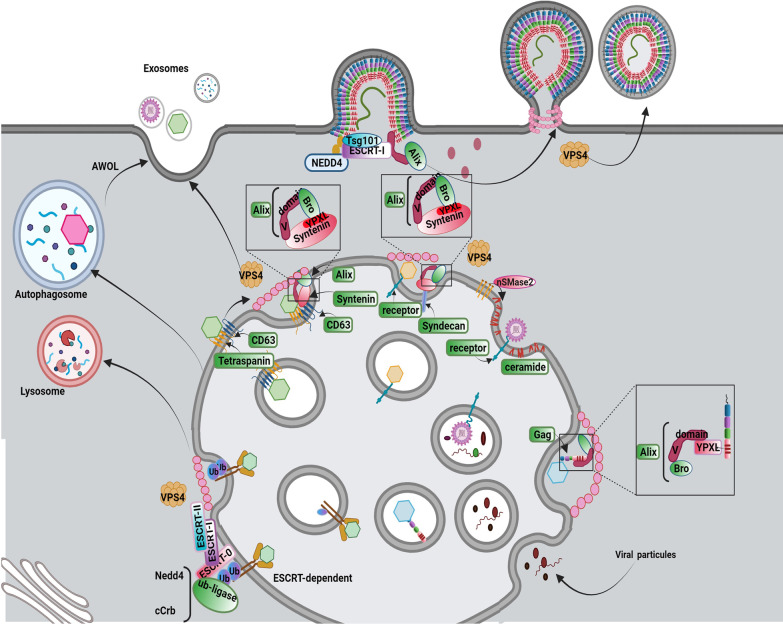Fig. 7.
Hijacking mechanisms Cellular adaptor proteins and complexes for promoting viral infection. There are several budding systems for the release of virions. Different enveloped viruses are driven toward PM and hijack the ESCRT pathway via mimic of interactions between cellular adaptors and ESCRT factors. Furthermore, virions invaginate into the MVB and are led to lysosomal degradation or hijack exosomal and autophagosomal pathways. Budding into the MVB is mediated by the hijacking of the ESCRT pathway via attachment to the ubiquitinated viral receptors and finally lysosomal degradation. Also, the entry of virions into the secretion pathway is mediated by the attachment of virions to CD63 and recruitment of the CD63-Syntenin-Alix pathway. In addition to the binding of the virus to the host endosomal receptors and lead formation of ILV by Syndecan-Syntenin-Alix, and formation of ceramide by nSMnase induce. Besides, capsid proteins of virion recruit Alix to the PM and lead assembly of ESCRT-III and formation of virion vesicles. Hijacking Alix protein can promote viral ILV budding and exosomal pathway. ILVs containing LC3 form autophagosome-like vesicles which mediate the exit of the virus through autophagosomal vesicles or AWOL

